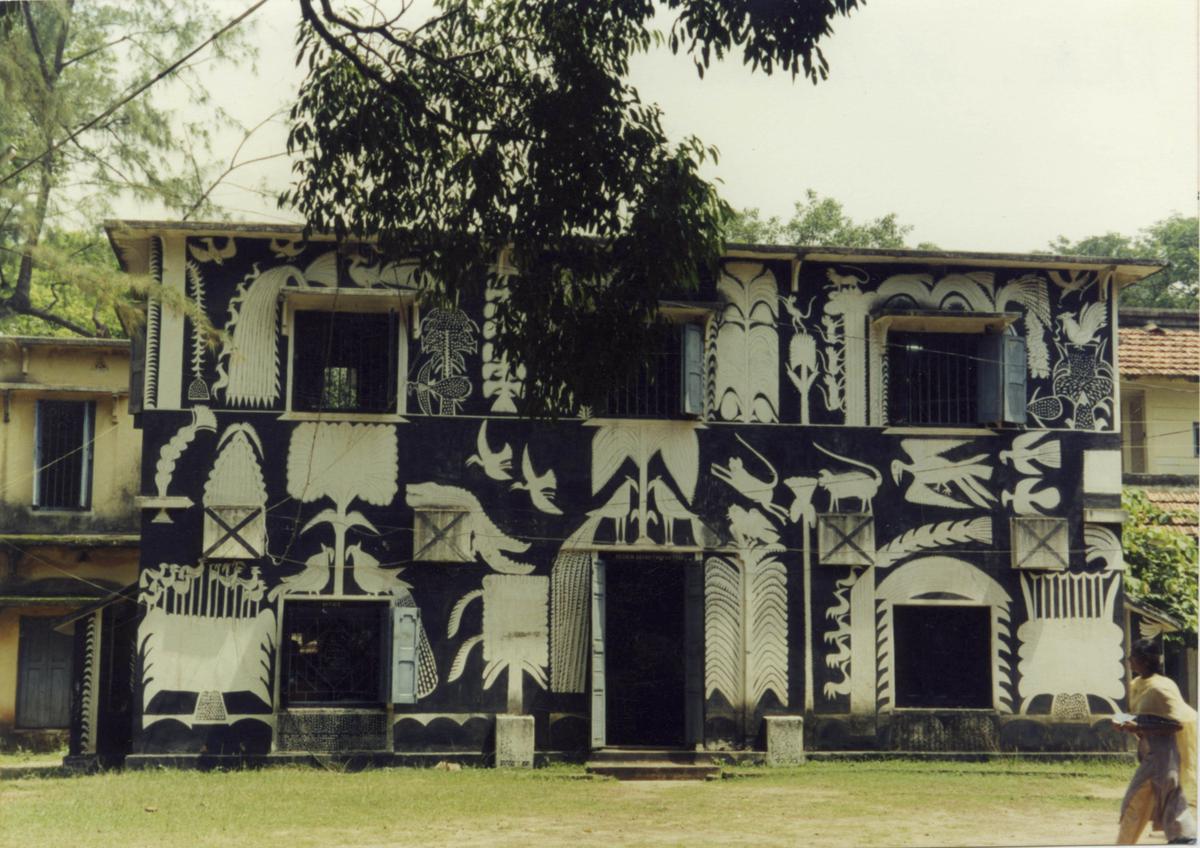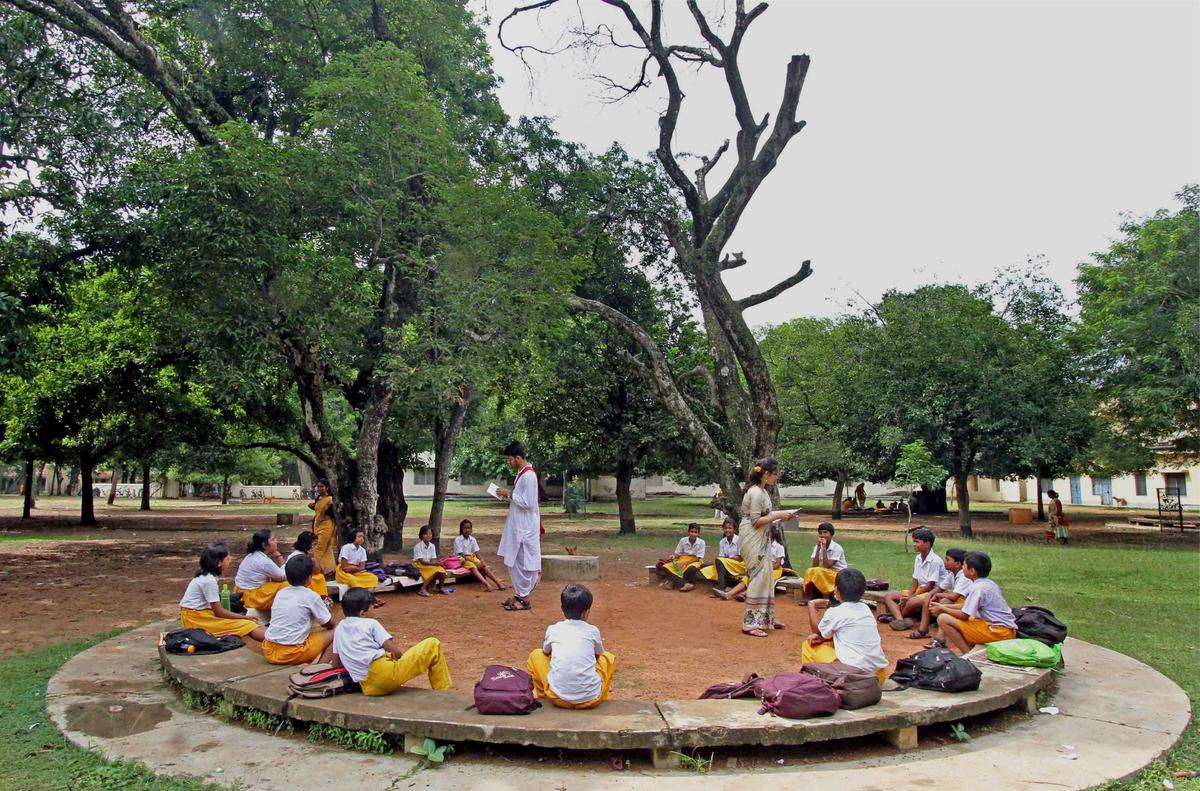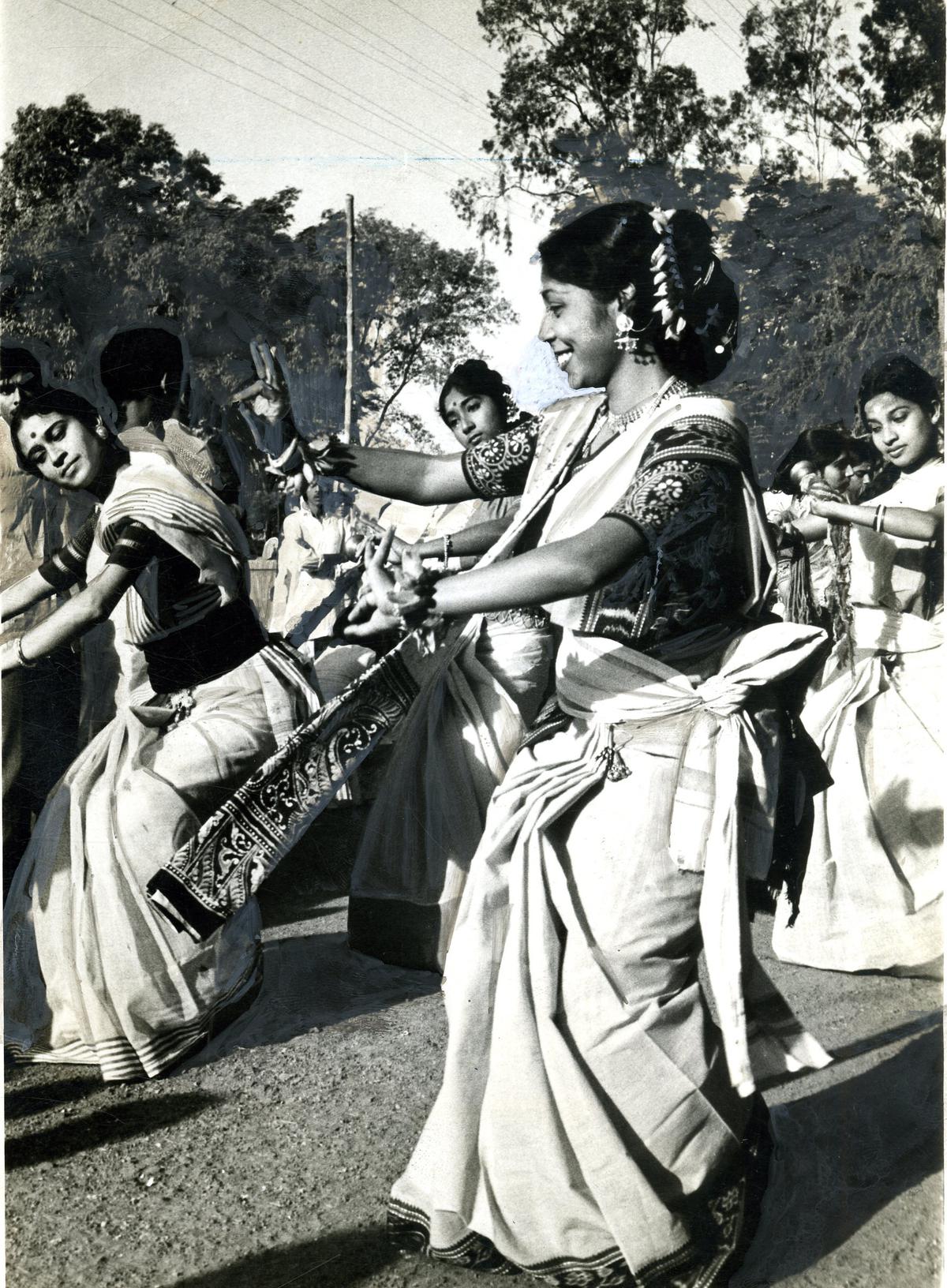How Rabindranath Tagore nurtured Santiniketan to become a cultural landmark

Santiniketan in Birbhum district, West Bengal
| Photo Credit: Rabindra Bhavan Archives
Santiniketan was in the news recently, and for a good reason. The World Heritage Committee inscribed Gurudev Rabindranath Tagore’s abode of peace on UNESCO’s World Heritage List. One of the country’s cultural landmark, Santiniketan, located in West Bengal’s Birbhum district, celebrates the timeless bond between Nature and arts.
The history of Santiniketan is fascinating. In 1863, while passing through the area Maharshi Devedranath Tagore, taken up by the red soil, greenery and quietude, decided to buy 20 bighas of land from its owner, zamindar Bhubanmohan Sinha of Raipur (West Bengal). The place was known as Bhuvandanga, a dacoit-infested area in the neighbourhood of Bolpur in Birbhum district. The Maharshi, a philosopher, and socio-religious reformer and leader of Brahmo Samaj strived hard to bring peace to the area. He succeeded in transforming the dacoits, brought them back to the mainstream of society and inspired them to help build a uniquely designed prayer hall. It was a 60ft long and 30ft feet wide with tiled roof and marbled floor. But the walls were made of tinted glasses. He named it Santiniketan (abode of peace).

Kala Bhawan at Santiniketan
| Photo Credit:
SHONA ADHIKARI
The palatial Jorasanko Thakurbari, Maharshi’s ancestral house in Calcutta, always buzzed with activity — hosting music events, jatra, plays, poetry and painting sessions, and even talks on textiles. The family, endowed with worldly riches as well as wealth of intellect and aesthetics, contributed immensely towards the enrichment of life and society in Bengal.
Rabindranath (1861-1941), the youngest of 14 children of Maharshi and Sarada Devi, was introduced to Upanishads, literature and music at a very young age. Encouraged by his father, Rabindranath in his early teens penned and tuned a few devotional songs and sang them at Brahmo-Samaj congregations. In his own words, “To me, the verses of the Upanishads and the teachings of Buddha have ever been things of the spirit and therefore endowed with boundless vital growth, and I have used them both in my own life and in my preaching.”

Children in an open air classroom at Patha-Bhavana inside Visva-Bharati University campus in Santiniketan.
Rabindranath stepped inside his father’s Santiniketan for the first time at the age of 17 (1887); and got drawn to its serene ambience. It was here that he came in contact with the mystic Bauls and got acquainted with Kabir’s philosophy. Their influence also played a vital role in moulding his thought process. Despite his success as a poet, lyricist, music composer, storywriter, novelist, playwright, performer and orator, the multifaceted young man wished to teach. He had inherited his father’s compassionate nature that compelled him to educate the masses and introduce them to the riches of ancient Indian scriptures. For this he needed a suitable place far away from the madding crowd.
By 1901, Rabindranath made up his mind and chose Santiniketan, situated approximately 150 km north of Calcutta, to start with Brahmacharyaashram, a school (renamed Pathha Bhavana in 1925) modelled after the ancient guru-shishya parampara. His enlightened and affluent family supported his views. The school saw a rapid growth because Rabindranath was successful in bringing learned teachers from all over the country. Especially after his global fame as the first Asian Nobel Laureate. Both Jawaharlal Nehru and Mahtama Gandhi became his admirers. Within two years, Rabindranath was knighted by the ruling British government; but after the gruesome Jallianwala massacre, he expressed dissent in his own way by returning the Knighthood .

A jatra winging its way through the campus at Santiniketan
By then Rabindranath Tagore had attained the status of an ambassador of Indian spirituality and traveled all over the world on friendly lecture-tours. Despite his busy schedule, he took care of Santiniketan’s natural beauty because he wanted to create an environment for the students which would help open their minds. He emphasised on the growth of imagination, alertness and curiosity in a child. He taught them to enjoy the small pleasures of life. When the first tube-well was installed in the campus, he welcomed it with a new song.
He also took care of their physical wellbeing and, defying all taboos, made yoga, sports and dance an integral part of studies. To facilitate this, he invented Poush Mela, Nandan Mela and agricultural festivities like Vriksharopan (tree plantation) and Halakarshan (ploughing fields). He transformed Varsha and Basant utsavs by infusing into them his Rabindrasangeet, which drew the best from every genre — Hindustani, Carnatic and Western music; and Rabindric dance, a blend of Manipuri, Kathakali, Kathak and Western styles.
Rabindranath Tagore at Santiniketan
This success-story has an equal quotient of deep sorrow too. Within an year of shifting base from Calcutta, Rabindranath lost his wife Mrinalini Devi. After two years, his 13-year-old daughter Renuka died. He remained stoic; but he was shattered when Shamindranath, his youngest child, passed away. Many of his songs composed during this period bear the testimony of his pain. His second daughter Mira and elder son Rathindranath along with his second wife Pratima were his constant companions. In 1921, at the age of 60, Rabindranath laid the foundation of Visva Bharati and nurtured it till his last breath (1941). Under his guidance, in 1951 it became a central university of national importance and international repute.
For all the latest Entertainment News Click Here
For the latest news and updates, follow us on Google News.
